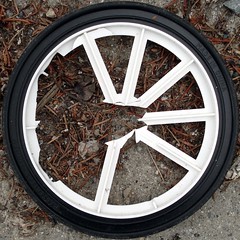When you think about linking for SEO purposes, you tend to think about link building from other web properties to your website in order to build trust. That is an extremely important aspect of linking for SEO, but what about the links that exist on your site? Internal linking from one page of your site to another is important for usability purposes. It helps the visitor maneuver your site in order to quickly find what they are looking for. In addition to linking to internal pages, it sometimes makes sense to link out to external sources as well. For example, if you operate a blog and want to link to a reference that you used within the post. While you have control over the links on your own site, you don’t have control over the sites that you are linking out to and over time that website may shut down or the URL structure could change without redirects being implemented resulting in a 404 error. If this happens it means that you are sending visitors to an error page, which isn’t good for usability purposes.
The search engines want to send users to sites that are user friendly. Since the search engines factor usability into their complex algorithms, broken links can diminish the trust that you are working so hard to achieve. As the search engine spiders crawl your site from link to link, if they come across many links that don’t go anywhere it raises a red flag. Nobody wants to visit a site that has a significant number of links that go to a 404 error page. This is why it’s so important to run a broken link report on a semi-annual basis.
The websites that need to worry about broken links the most are the sites that are the most active and continually adding content via a blog or an articles section. Websites that don’t update or add content on a regular basis will likely have a smaller amount of links so there is less of a chance that they will be broken. Bloggers often link out to outside sources to prove a point, back up a statement, or argue something that was previously published. While this is a good approach to get noticed by others and work to build a community, it can lead to a number of broken links overtime. One common place to find broken links is within the comment field of a blog. If you’ve been blogging for awhile there’s a good chance that many of those comments are coming from owners of websites that no longer exist.
Broken links can also be internal. Perhaps you changed some things around on your site and eliminated some pages that were no longer relevant without redirecting but links to those pages are still floating around on other pages of your site. Or maybe, it was a coding issue that resulted in some broken links. Either way, it’s important to take the steps necessary to eliminate these broken links.
Since it’s extremely time consuming to go through and look at every page on your site and manually check for broken links, it’s recommended to use an SEO tool like Link Tiger to find broken links. It’s a paid tool, but it’s worth the investment especially for large sites.
Once you have compiled a list of broken links it’s important to remove them from your site. The process takes time, but can improve the way that the search engines view the usability of your website and in turn improve SEO efforts.








